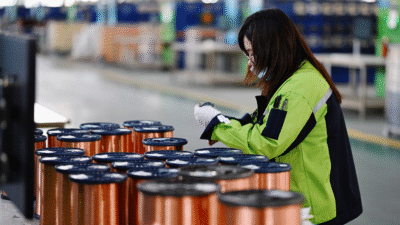FAA Tells Boeing it Has Three Months to Fly Right
The aerospace giant has 90 days to produce a quality-control plan in the wake of a near-disaster earlier this year.
Sign up for smart news, insights, and analysis on the biggest financial stories of the day.
Straighten up and fly right, Boeing.
After two fatal crashes in the past five years and the recent Alaska Airlines jet door incident, the Federal Aviation Administration said Boeing has three months to address quality-control issues.
Cause for Concern
In October 2018, Lion Air Flight 610 departed from Soekarno–Hatta International Airport in Indonesia. After just 13 minutes, it crashed into the Java Sea because of faulty flight-control software, killing all 189 people on board. Only a few months later, in March 2019, a similar fate befell Ethiopian Airlines Flight 302. And just at the start of this year, a cabin panel on Alaska Airlines Flight 1282 blew out at 16,000 feet because of missing bolts.
The common thread among all three tragic incidents — Boeing’s 737 MAX jet:
- This week, the FAA said it expects Boeing to provide a comprehensive action plan within 90 days to ensure further incidents don’t occur. Boeing has agreed to develop the plan. Certain 737 MAX 9 jets were grounded following the Alaska Airlines incident, but the hold was lifted at the end of January. However, the FAA has halted the expansion of the company’s 737 MAX production until further notice.
- The FAA deadline follows a report conducted by a separate panel of government and aviation experts. The report, which includes 53 recommendations, found a disconnect between Boeing’s senior management and other members of the organization on safety culture. It said some employees might hesitate to report safety concerns out of fear of retaliation.
Boeing has been called out before for lapses in safety management. In 2019, The New York Times found evidence of debris left on planes and pressure on employees to not report violations at a 787 Dreamliner facility in South Carolina.
Sky Duopoly: While Brazil-based Embraer and China’s Comac technically exist, the commercial jet industry is far from diverse. Boeing and Airbus account for pretty much all of the market, so if either of them is grappling with serious safety issues, grounded flights, and production halts, that’s a major problem for the air travel sector. And airlines can’t just switch to Airbus in the interim — securing an order and then actually receiving planes can take months if not years. Right now, Airbus’ production for many of its planes is completely booked for the next four to six years. Magellan circumnavigated the world in a boat in less time.












